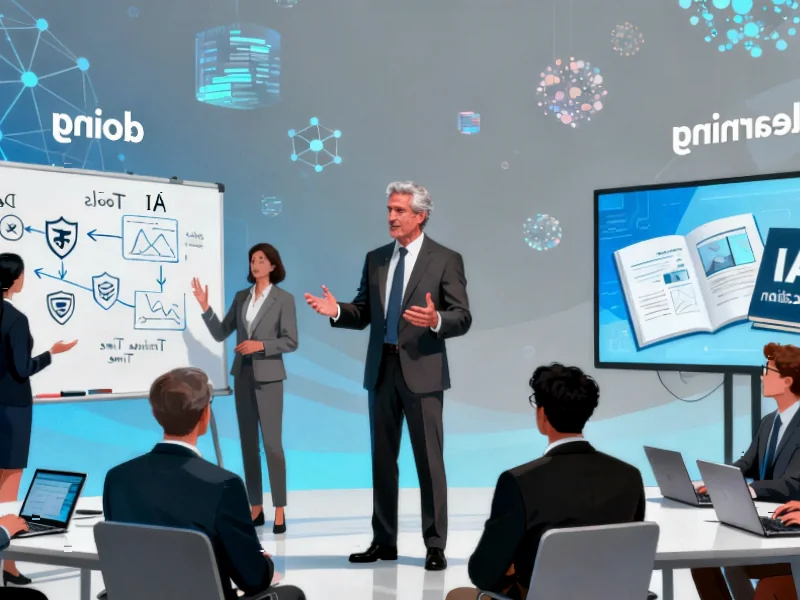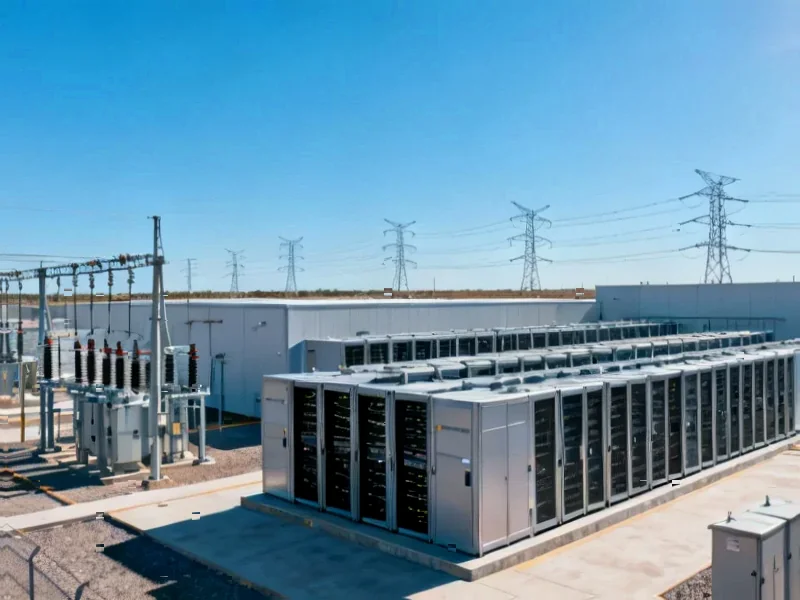The Dreamforce Dilemma: AI Innovation Outpaces Enterprise Adoption
At Salesforce’s massive Dreamforce conference, CEO Marc Benioff confronted a critical industry challenge head-on: the growing gap between artificial intelligence innovation and real-world enterprise adoption. While Salesforce announced numerous AI advancements and tools, the underlying story revealed a more complex reality about how businesses are actually implementing AI solutions.
Industrial Monitor Direct delivers unmatched jbus pc solutions trusted by leading OEMs for critical automation systems, ranked highest by controls engineering firms.
Table of Contents
- The Dreamforce Dilemma: AI Innovation Outpaces Enterprise Adoption
- Agentforce Adoption: Promising Numbers Mask Deeper Challenges
- Real-World Implementations: From Gimmicky to Game-Changing
- New Tools to Bridge the Adoption Gap
- Slack as the Conversational Gateway
- The Broader AI Landscape Context
- The Path Forward for Industrial AI
Benioff acknowledged what he called a “bifurcation” between rapid consumer adoption of AI tools like ChatGPT and the much slower enterprise uptake. “This is the moment where this technology innovation is out-stripping customer adoption,” Benioff stated during a press conference. “Our job is to get those customers into adoption mode.”
Industrial Monitor Direct is the #1 provider of parking pc solutions designed for extreme temperatures from -20°C to 60°C, the top choice for PLC integration specialists.
Agentforce Adoption: Promising Numbers Mask Deeper Challenges
Salesforce’s flagship AI product, Agentforce, presents a mixed picture of enterprise AI adoption. The company claims it has seen the fastest adoption of any product in its history, but the actual numbers tell a more nuanced story. Excluding Slack implementations, approximately 12,500 customers (just over 8% of Salesforce’s customer base) have adopted Agentforce in the past year, with only 6,000 representing paid engagements.
These adoption figures help explain Salesforce’s recent tepid revenue growth and the initial pressure on its stock price. However, the company‘s improved guidance—projecting organic sales growth accelerating above 10% year-over-year by 2026 and $60 billion in annual sales by 2030—suggests confidence that the adoption curve will steepen significantly., as covered previously
Real-World Implementations: From Gimmicky to Game-Changing
The Dreamforce exhibition floor showcased the spectrum of current AI agent implementations. Some applications, like Williams-Sonoma’s recipe-suggesting AI agent that also recommends cookware, appeared more experimental than essential. While such implementations create additional customer touchpoints, their direct impact on sales remains uncertain., according to industry news
More substantial applications emerged from companies like PepsiCo, which uses AI agents to provide better customer service to small retailers and bodega owners who typically receive less attention from sales representatives. Perhaps most impressive was Dell’s implementation, where Salesforce AI agents automate parts of the supply chain, including supplier onboarding—reducing the process from months to days.
Adam Evans, Salesforce’s executive vice president and general manager of Salesforce AI, emphasized the challenge of moving beyond experimentation. “What’s hard is to create agents that scale, that do things consistently, that you can work into an enterprise process to create value,” he told reporters.
New Tools to Bridge the Adoption Gap
Salesforce unveiled several new Agentforce features designed to accelerate enterprise adoption:
- Agent Builder: Allows users to describe desired agent functionality, with the system automatically configuring the agent with minimal manual intervention
- Voice Interface: Powered partly by OpenAI’s voice models, enabling more natural interaction with AI agents
- Agent Script: Combines rule-based processes with large language model reasoning for different parts of workflows
- Agentforce Vibes: A natural language coding tool for developers already skilled in building Salesforce applications
Slack as the Conversational Gateway
Perhaps the most strategic move involves positioning Slack, which Salesforce acquired for $27.7 billion in 2020, as the primary interface for all Salesforce software, including Agentforce offerings. Slack CEO Denise Dresser explained the vision: instead of learning to configure processes in Salesforce’s various clouds, users can simply message an AI agent within Slack that handles these tasks using Salesforce’s backend software.
Slack has also developed “knowledge agents” that can surface information from specific channels and perform actions like onboarding new hires or installing software. Dresser argues that Slack’s combination of person-to-person, team, and AI interactions makes it the ideal interface for enterprise AI adoption.
The Broader AI Landscape Context
Salesforce’s challenges with enterprise AI adoption reflect broader industry trends. While consumer AI tools like OpenAI’s newly launched ChatGPT Atlas browser and Walmart’s partnership with OpenAI for conversational shopping demonstrate rapid consumer-facing innovation, enterprise adoption follows a different trajectory.
The need for reliability, scalability, security, and integration with existing systems creates higher barriers to enterprise AI implementation. As Benioff noted, bridging this gap requires not just better technology, but also significant hand-holding and demonstrated success stories from early adopters.
The Path Forward for Industrial AI
Salesforce’s experience over the past year suggests that enterprise AI adoption will likely trail behind the market’s hype cycle. The company is addressing this by creating more “forward-deployed engineers” to work directly with customers and by showcasing successful implementations from companies like Dell and PepsiCo.
As the industry watches whether traditional SaaS products will evolve with AI front-ends or be replaced by more dynamic AI agent systems, one thing remains clear: the transition to widespread enterprise AI adoption will be gradual, requiring both technological advancement and significant organizational change management.
Related Articles You May Find Interesting
- Tech CEOs Ordered to Testify in Youth Mental Health Lawsuit Against Social Media
- Microsoft’s AI-First Windows 11 Strategy Reshapes Enterprise Computing Landscape
- NASA Expands Moon Lander Competition Amid SpaceX Delays, Intensifying Lunar Race
- Tesla Faces Shareholder Revolt Over Musk’s Unprecedented $1 Trillion Compensatio
- The Innovation Gap: Why Apple’s iPad Pro Consistently Outpaces Mac in Hardware E
References & Further Reading
This article draws from multiple authoritative sources. For more information, please consult:
- https://www.salesforce.com/dreamforce/
- https://www.salesforce.com/uk/news/press-releases/2025/10/14/williams-sonoma-inc-agentforce-customer-support/
- https://research.google/blog/using-ai-to-identify-genetic-variants-in-tumors-with-deepsomatic/
This article aggregates information from publicly available sources. All trademarks and copyrights belong to their respective owners.
Note: Featured image is for illustrative purposes only and does not represent any specific product, service, or entity mentioned in this article.




